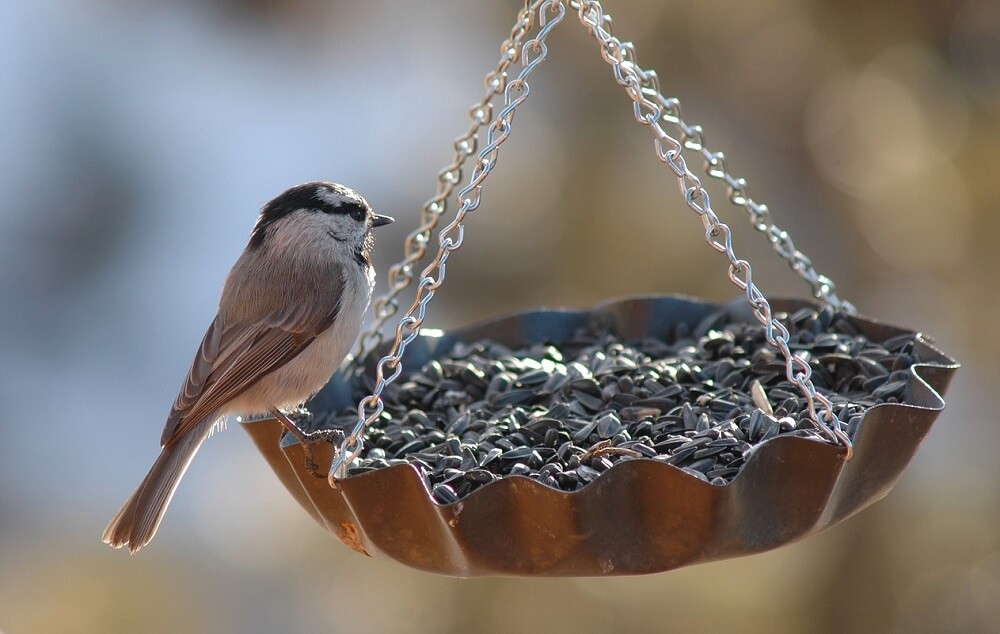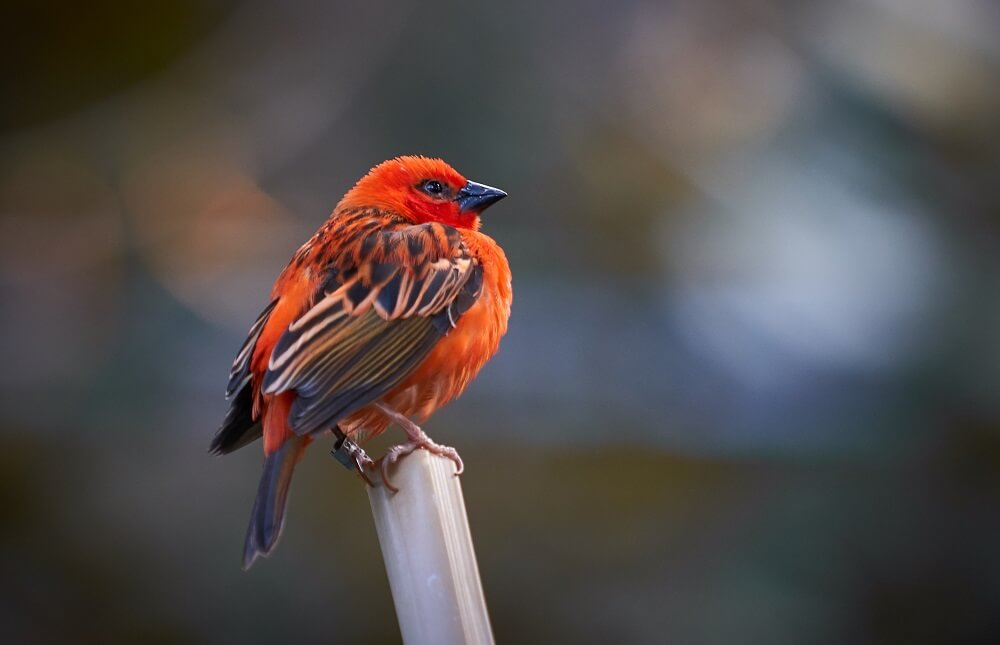Welcome back! In the last article, we covered where to place oriole bird feeders to attract orioles to your yard. Today, we will cover finch bird feeders.
Finches can be found on nearly every continent. The only areas without natural species of finches are Australia, Antarctica, and the South Pacific. European finches have been introduced to Australia and can sometimes be found there.
Finches are a small bird that generally love wooded areas. Some species also inhabit mountainous areas and desserts.
If you want to attract finches to your bird feeders there are a few important things to remember about how and where to hang your feeders.
How To Attract Finches To Your Bird Feeders
1. Hang Finch Feeders Close To Tall Trees.
Finches love to nest and perch in trees as high as 30 feet high. They are small birds and need to build their nests in a safe haven.
If you have space, consider planting some tall trees for the finches to nest in.
2. Don’t Kill All Your Weeds.
Finches love weed seeds.
Did you catch that?
Finches love the seeds that come from common weeds. They adore local thistle seed. That’s their favorite seed to eat.
Leave a little patch near your trees to attract finches. They build their nests with thistles, briars, and other weeds.
Did you know?
They also love sunflower seed, dandelion seeds, goldenrod, pigweed, ragweed, ragwort, tarweed, and milkweed.
If you allow your milkweed to grow, you’ll also be helping the monarch butterflies to have a safe home.
Other plants finches love include coreopsis, cosmos, serviceberry, birch, hornbeam, sweetgum, mulberry, hemlock, zinnias, elm, and alder for nest building.
3. Use Finch Feeders
Finches eat mostly smaller seeds.
Finch feeders can be plastic, metal, or loosely woven socks. Nyjer feeders attract almost exclusively finches.
Nyjer is also referred to as niger, nyer, and a variety of similar names.
Nyjer feeders have small holes placed above the perches. The holes are so tiny that only tiny beaks can extract the seeds.
Sock feeders are reusable and usually last for 3 or 4 refills before they are too worn to continue use.
Wire feeders allow finches to perch anywhere on the tube and feed through the narrow mesh.
4. Place Away From Bigger Bird Feeders
Finches will shy away from other larger birds. They are typically friendly to small birds about the same size as them so hanging several small bird feeders in the same area won’t scare them away.
But, bigger birds will keep the finches from coming to eat.
5. Place A Bird Bath Nearby
Finches love to bath. They are very attracted to water. Placing your feeders near a birdbath will help to invite finches to come to eat.
6. Use Black Seeds
Finches only eat black seeds. They are picky eaters. They won’t eat brown seeds or any seed that looks like it’s waned in freshness.
Nyjer seed is a popular seed for finches. It’s also called thistle seed but doesn’t come from a true thistle.
It hails from Ethiopia and is imported in as finch seed.
It is also sterilized since it’s an imported seed so it won’t grow into a pest plant when it’s dropped on the ground.
In addition to nyjer seed, there are several black seeds you can purchase for your feeder.
- Nyjer
- Black Oil Sunflower
- Thistle seed
- Safflower Seed – Only house finches will eat this type of seed, which isn’t black.

7. Keep It Fresh
Finches only eat fresh seeds. If you purchase nyjer seed, it will last longer if you keep it in the refrigerator.
Once nyjer’s black color starts to fade, finches won’t eat it.
They also won’t eat moldy or rotten seed.
That means that you should clean out your finch feeders often.
8. Keep The Feeders Dry
Finch feeders usually have small openings. That means that once moisture gets inside, the seed usually molds quickly.
It can also get clumpy and hard for finches to remove.
Plastic feeders restrict air circulation. Metal grate feeders offer more places for the air to circulate and won’t get moldy quite as fast.
It’s important to place a rain guard on your feeders to keep the rain out during the rainy times of the spring and summer.
9. Add Natural Weeds To The Feeder
Finches don’t always recognize a feeder as a source of food. If your finches aren’t eating, then try sticking a few thistle or dandelion into the holes in the feeder.
This will attract the finches to your feeder and help them to discover the seed inside.
10. Keep Feeders Full
Finches are notorious for only eating half of the seed in their feeders. They love a feeder full of seed.
If the remaining seed still looks fresh and black, then fill your feeder. Put the older seed at the top of the feeder and the newer seed in the bottom.
11. Add Brightly Colored Ribbons To The Feeder
Bright colors attract finches. They love vivid colors that are easy to see.
A ribbon moves in the breeze. This often ‘imitates” the movements of other birds.
It helps finches to feel like other birds have been by and that the feeder is safe.
Related Questions
Why aren’t finches eating from my birdfeeders? Finches only eat dark seeds. Nyjer seed is the most popular seed for finches, but even then the seed must be fresh. It cannot be dried out or the finches won’t eat it. It should also not be wet, damp, or clumpy. Finches are particular eaters and will only eat from fresh, nutritious seed. Once nyjer seed dried out it is no longer beneficial to finches.
Only purchase nyjer seed that can be used within the next month and remember to store extra seed in the refrigerator to keep it fresh longer. Even if you just purchased the nyjer seed, make sure that it is fresh. Nyjer is considered a weed and is sterilized before it can be shipped into the USA. That means that it might be dried out already and undesirable for finches.
How to build a finch house? Finch houses should be about 6″ square. The houses are enclosed birdhouses. Entrances should be about 1 1/4 inches in diameter. This will help to keep out bully birds such as house sparrows. Wood should be rough cut so that finches can cling to the side of the house both on the inside and outside of the house. Allow spaces for good ventilation so that the house stays cool in the hot summer months and doesn’t get too moist during the winter.
Conclusion
Take these steps and you should see plenty of finches around your house. If you want to attract more types of birds, then don’t forget to check out the next post in our series on wild birds on where to place a bluebird feeder.
You might also be interested in these earlier posts:
How To Place And Use Suet Feeders
Where To Place A Hummingbird Feeder



